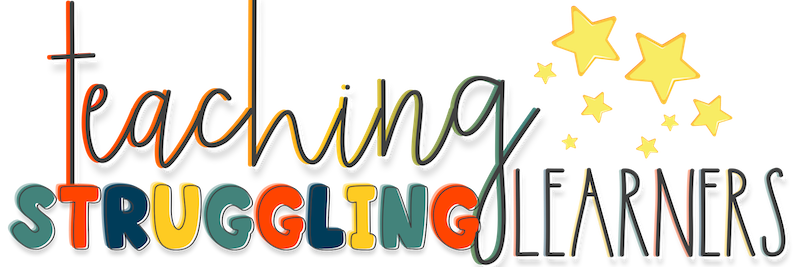No! Assessment is NOT the first step!
Progress Monitoring does not have to be a dirty term! I have spent 11 years progress monitoring, so I am going to share the 5 steps I have learned to get started effectively progress monitoring my students. Prepare yourself….the steps may shock you…..

- Listen!
- Watch!
- Try it Out!
- Assessment!
- Make a Goal!
You got it! The first step in Progress Monitoring is NOT assessing the student! We, as teachers, are professionals. We know when a student is struggling, and we do not need a formal assessment to figure that out. You are a great teacher who loves their kids (or I am willing to assume you are, since you are reading this post right now), and you have everything you need to get the party started in Progress Monitoring!
Yes, I consider progress monitoring a party. I love progress monitoring, but more on that in later posts….
Step 1: Listen!
Listening to our students speak or read is the first, and possibly most important, step in determining areas of strength and weakness. Students who struggle to hear sounds, will probably have trouble identifying the letter associated with that sound when it comes to phonics time. If they have a hard time distinguishing between question words (who versus what or when for example) will probably struggle with comprehension. Students who emphasize syllables incorrectly, will probably struggle to sound out words with the correct emphasis. A student’s speech is the first step in becoming literate. Students who are not maturing with their speech and language acquisition, will most likely struggle when learning to read.
*Here is where I would like to do a shout out to our awesome speech and language teachers! They provide a valuable service to millions of students, nationwide. Their work lays the foundation that classroom and special education teachers use to teach EVERY OTHER SUBJECT. If you don’t know them already, get to know your speech and language people in your school. They can give you valuable insight into how you can help mitigate reading issues before they become a problem in your classroom.*
Step 2: Watch!
As you already know, students give their emotions away in just about everything they do. Watching how students interact with the curriculum helps teachers to note where students feel confident or lack confidence. These indicators help teachers to know areas in which students need more work to help them feel more confident in their abilities.

Step 3: Try It Out!
After listening and watching, sit with your student as they attempt to perform the task you feel they may be struggling to complete. This is a perfect opportunity to see exactly what is causing the struggle. Pinpointing this makes the next step much less painful for yourself and your student.
Step 4: Assessment
As you know, the Response to Intervention (RTI) process would not be complete without an assessment. Determining the area of weakness prior to assessments means that teachers will need to test that skill and any prerequisite skills as needed. For example, students who are struggling to identify letter sounds should be assessed to determine the letter sounds with which they struggle, as well as their ability to differentiate sounds, or identify letters.
Step 5: Make a Goal!
After assessing the current skills of students, a goal should be made to help the teacher and student determine next steps. By creating a goal which describes exactly how well the student will perform the skill, as well as when the student will be able to perform the skill, teachers create a road map which will help them to know how best to move their students in that direction.

You may be thinking. “Now that I’ve done all this, what do I DO with my student?” Here comes the fun part! Now is when you and your student start working toward your goal. Using games as practice is an ideal way to help keep your student motivated while working toward their goals.I have created and shared a system I have used many times to progress monitor my students. I have included assessments, games, and suggestions for how to help students achieve the goals you have made with them. Through the use of fun games, you and your student will make gains toward your goals. For a closer look at what I have used for rhyming identification check out the link below.
Want more info? Check out my post: 5 Steps to Integrate Progress Monitoring to learn more about how I have made progress monitoring a seamless part of my day.

